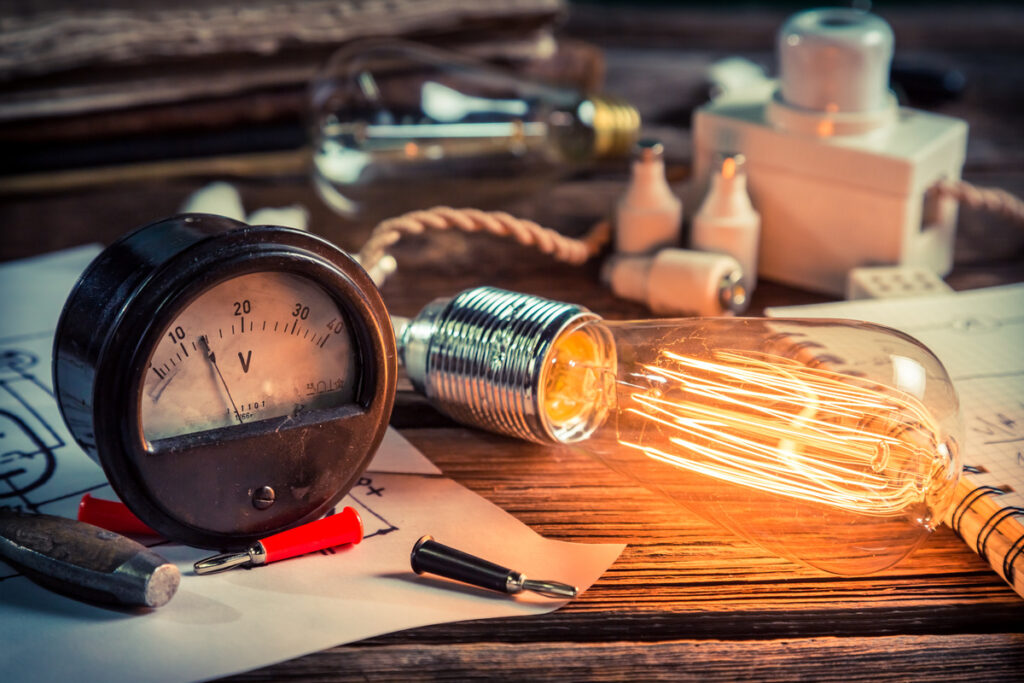The History of Electricity: From Discovery to Invention
Electricity has revolutionized the world, powering our homes, driving our technology, and shaping modern society. The story of electricity’s invention is a fascinating one, filled with the contributions of many brilliant minds throughout history. In this comprehensive article, we will explore the origins of electricity, the key discoveries that paved the way for its invention, and the individuals who played pivotal roles in harnessing this powerful force.
Early Discoveries and Experiments
The concept of electricity can be traced back to ancient times, with early experiments and observations laying the foundation for future discoveries. In the 6th century BCE, the ancient Greek philosopher Thales of Miletus discovered that by rubbing fur on amber, the amber would attract lightweight objects. This phenomenon, known as static electricity, was one of the earliest recorded observations of electricity.Over the centuries, various scientists and philosophers continued to study and experiment with static electricity. In the 17th century, Otto von Guericke invented the first electrostatic generator, which produced static electricity through friction. This device allowed for more controlled experiments and demonstrations of electrical phenomena.
The Invention of the Battery
One of the most significant breakthroughs in the history of electricity was the invention of the battery. In 1800, Alessandro Volta, an Italian physicist, created the first electric battery, known as the Voltaic pile. This device consisted of alternating discs of copper and zinc separated by cloth soaked in brine, which produced a steady flow of electricity.Volta’s invention was a major step forward, as it provided a reliable source of electricity that could be used for experiments and demonstrations. The Voltaic pile paved the way for further advancements in the field of electricity, including the discovery of electromagnetism by Hans Christian Ørsted in 1820.
The Discovery of Electromagnetism
In 1820, Hans Christian Ørsted, a Danish physicist, made a groundbreaking discovery while conducting experiments with a Voltaic pile. He noticed that when an electric current passed through a wire, it caused a nearby compass needle to deflect. This observation demonstrated the relationship between electricity and magnetism, leading to the field of electromagnetism.Ørsted’s discovery sparked further research and experimentation by other scientists, including André-Marie Ampère, who developed the laws of electromagnetism, and Michael Faraday, who made significant contributions to the understanding of electromagnetic induction.
The Development of Generators and Motors
Building upon the discoveries of electromagnetism, scientists began to develop devices that could convert mechanical energy into electrical energy and vice versa. In 1831, Michael Faraday invented the first electric generator, which produced an electric current by moving a wire through a magnetic field.Faraday’s invention laid the foundation for the development of modern generators and power plants. Around the same time, Faraday also invented the first electric motor, which converted electrical energy into mechanical energy. These devices played a crucial role in the practical application of electricity and paved the way for its widespread use.
The Invention of the Light Bulb
One of the most iconic inventions in the history of electricity is the light bulb. Although several inventors experimented with electric lighting in the 19th century, Thomas Edison is often credited with the invention of the practical incandescent light bulb.In 1879, Edison and his team at the Menlo Park laboratory conducted extensive experiments to find the right combination of materials for a long-lasting, efficient light bulb. They eventually settled on a carbonized bamboo filament, which could burn for over 1,200 hours. Edison’s light bulb revolutionized indoor lighting and paved the way for the electrification of homes and cities.
The Alternating Current (AC) vs. Direct Current (DC) War
As electricity became more widely used, a debate arose over the best method for distributing and transmitting electrical power. Thomas Edison, who had developed a system based on direct current (DC), faced competition from George Westinghouse and Nikola Tesla, who advocated for the use of alternating current (AC).The “War of Currents,” as it became known, was ultimately won by AC, which proved to be more efficient for long-distance transmission and better suited for powering motors and appliances. The adoption of AC as the standard for power transmission was a significant milestone in the history of electricity and enabled the widespread electrification of cities and industries.
The Transformation of Society
The invention of electricity has had a profound impact on society, transforming the way we live, work, and communicate. The ability to generate and distribute electrical power has enabled the development of countless technologies, from telephones and radios to computers and the internet.Electricity has also revolutionized industries, making possible the mass production of goods and the automation of manufacturing processes. The electrification of homes has improved quality of life, providing light, heat, and power for a wide range of appliances and devices.
Frequently Asked Questions
Q: Who invented electricity?
A: Electricity was not invented by a single person, but rather discovered and developed over centuries by many scientists and inventors. Some of the key figures in the history of electricity include Benjamin Franklin, Alessandro Volta, Michael Faraday, Thomas Edison, and Nikola Tesla.
Q: When was the first electric light bulb invented?
A: The first practical incandescent light bulb was invented by Thomas Edison and his team in 1879. They developed a carbonized bamboo filament that could burn for over 1,200 hours.
Q: What is the difference between AC and DC?
A: Direct current (DC) is a flow of electric charge in a single direction, while alternating current (AC) is a flow of electric charge that periodically reverses direction. AC is more efficient for long-distance transmission and better suited for powering motors and appliances.
Q: How has electricity transformed society?
A: Electricity has revolutionized society by enabling the development of countless technologies, improving quality of life, and transforming industries. It has made possible the mass production of goods, the automation of manufacturing processes, and the electrification of homes.
Q: What are some of the key discoveries and inventions in the history of electricity?
A: Some of the key discoveries and inventions include static electricity (Thales of Miletus), the Voltaic pile (Alessandro Volta), electromagnetism (Hans Christian Ørsted), the electric generator and motor (Michael Faraday), and the incandescent light bulb (Thomas Edison).
Conclusion
The history of electricity is a testament to the power of human ingenuity and the transformative potential of scientific discovery. From the early experiments with static electricity to the development of modern power grids and technologies, the story of electricity’s invention is one of perseverance, collaboration, and the relentless pursuit of knowledge.As we continue to explore the frontiers of electrical technology, it is important to remember the contributions of those who came before us and to build upon their legacy. The invention of electricity has forever changed the course of human history, and its impact will continue to shape the future of our world.
| Feature | Description |
|---|---|
| First Observation | Static electricity (Thales of Miletus, 6th century BCE) |
| First Battery | Voltaic pile (Alessandro Volta, 1800) |
| Discovery of Electromagnetism | Hans Christian Ørsted (1820) |
| First Generator | Michael Faraday (1831) |
| First Light Bulb | Thomas Edison (1879) |
| AC vs. DC War | George Westinghouse and Nikola Tesla vs. Thomas Edison |
For more detailed information on the history of electricity, you can refer to the Wikipedia page on the History of Electricity.



